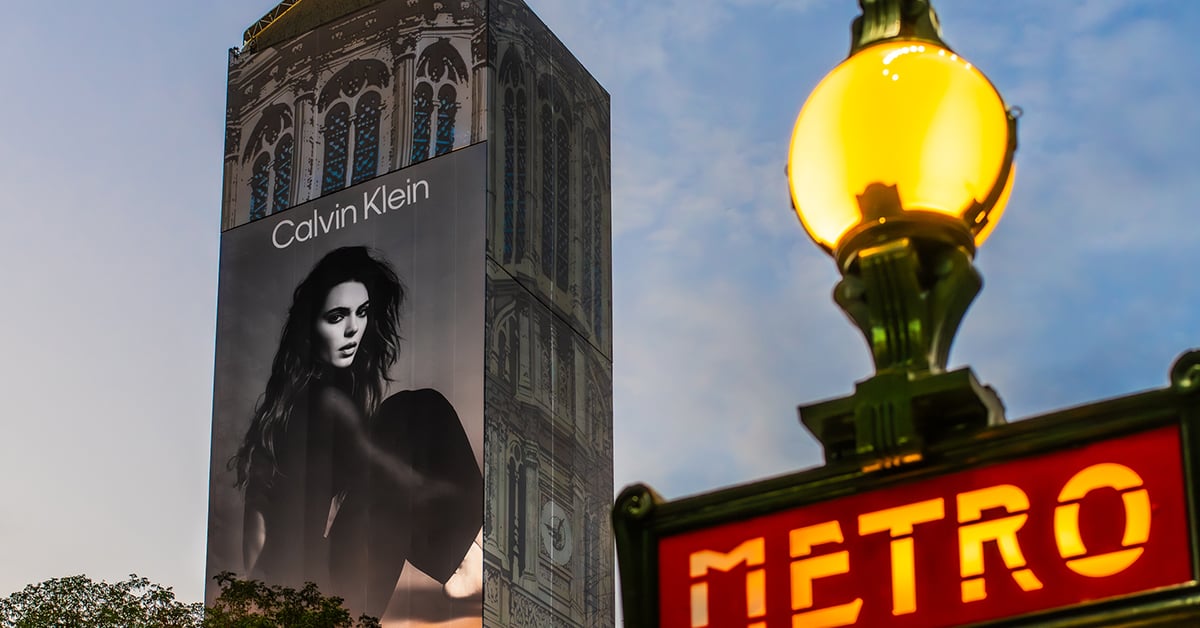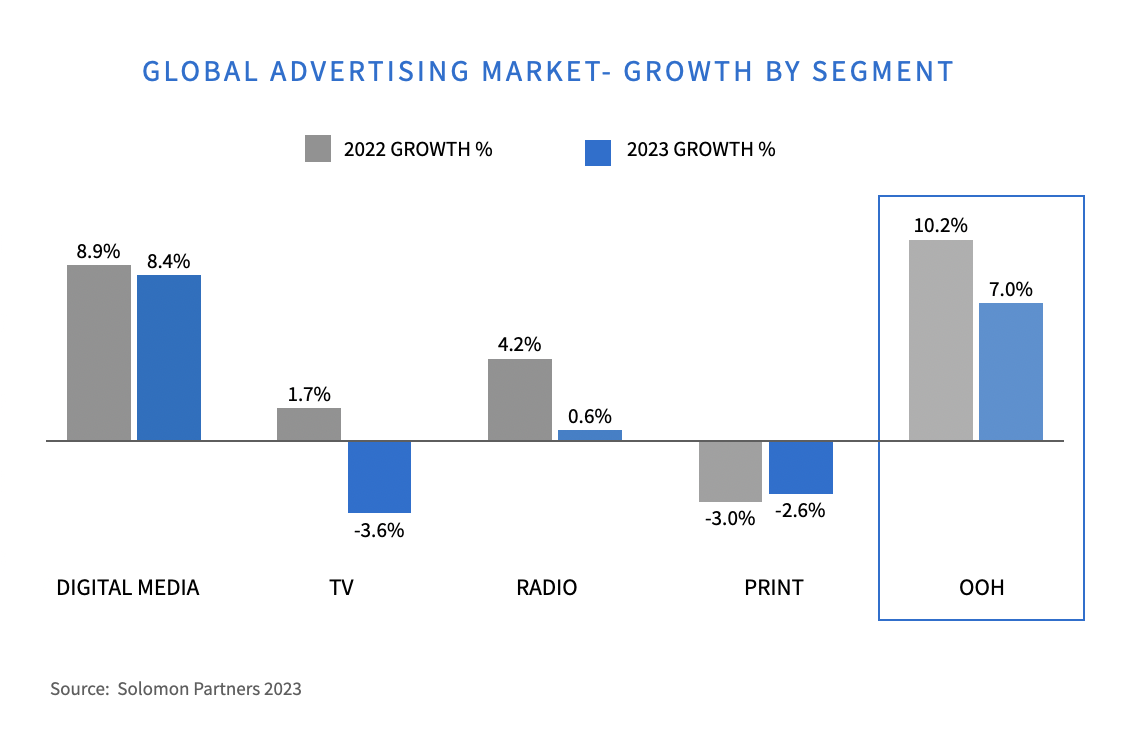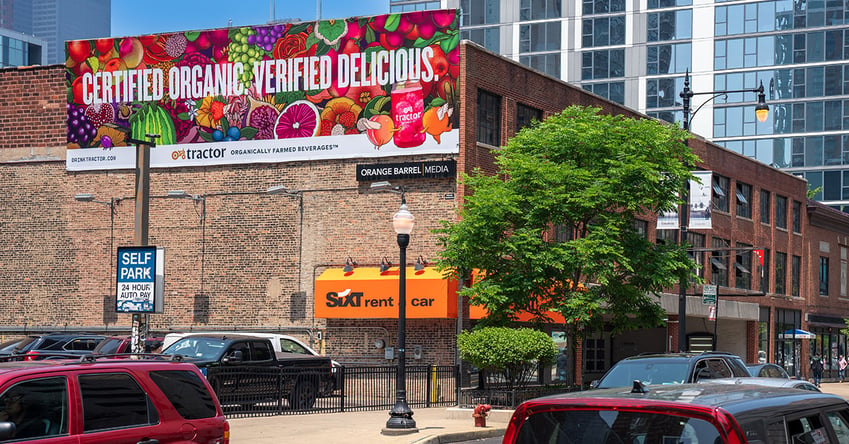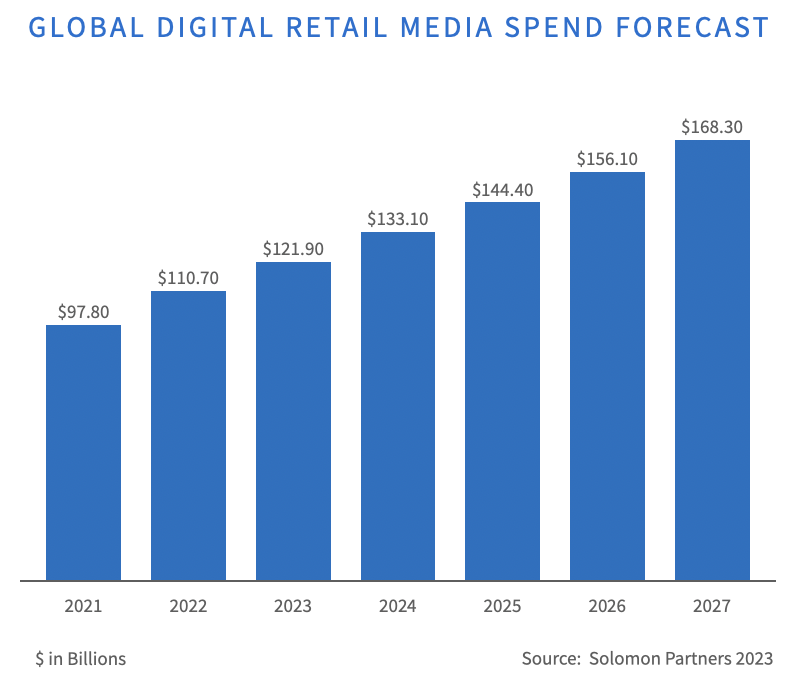
Consumers are becoming increasingly wary of content's validity and truthfulness. According to a recent World Out-of-Home (OOH) Conference presentation by Solomon Partners, 70% of surveyed adults fear the spread of misinformation. The rise of AI deep fake advertising adds to these concerns, with nearly half of consumers reporting they cannot detect a deep fake video.
This is just one reason many advertisers are returning to more traditional media formats. According to the presentation, 58 percent of consumers view OOH ads as more trustworthy and relevant than ads on any other platform. Those exposed to OOH said they were 10 percent more likely to trust an OOH-advertised brand.
Although OOH made up 4.1 percent of total ad spend in 2021, it generated a similar or more significant share of online action than TV, video, radio, and banner ads, according to a study from OAAA.
In this article, you will learn how and why OOH is growing in popularity amongst advertisers. You’ll know why so many advertisers are investing more in OOH, even as their investment in other channels is declining.

Consumers are continuing to spend more time outside their homes post-pandemic. Advertisers worldwide have been shifting their advertising dollars towards OOH in response.
Outdoor advertising grew 10.2 percent in 2022 and is expected to grow another 7 percent this year. Print is continuing to decline slowly. TV saw slight growth in 2022, but for 2023 is expected to drop in ad revenue share by 3.6 percent this year. While radio had moderate growth last year, it's expected to have little movement in 2023. Digital Media continues to hold at a steady growth rate of about 8 percent year over year.

Out-of-Home advertising is expected to grow as advertisers shift away from other traditional advertising mediums. Some of the reasons for this are that consumers spend more time with mobile and digital media rather than engaging with traditional tv, radio, newspapers, and magazines.
Even the new media channels are facing challenges. Streaming services continue to lose billions of dollars as their subscriber growth stagnates. There also continues to be an increasing number of platforms which has led to competition for engagement.
So why has OOH continued to see growth and success when other channels are struggling? There are a few reasons:
The rest of this article will delve more deeply into why so many advertisers are turning to OOH.
OOH ad recall, those who remember seeing an ad outpaces digital and mobile channels. Over 80 percent of those surveyed recalled seeing a printed or digital outdoor ad. In comparison Mobile and Digital ads had recall rates hovering around 50 percent. Note that figures represent the aggregation of publicly available studies on advertising recall from 2017-2022.
OOH stands out against a cluttered digital advertising landscape. It reaches people when they are more receptive to advertising and does so passively. This is another reason why many people view OOH as a favorable form of advertising. Investing in OOH media could help audiences remember and engage with your brand, but is it worth investing more dollars in OOH?

Regarding cost per thousand impressions (CPMs), OOH is the best bang for your buck. Digital Display ads at 80 cents to 4 dollars CPMs are the only less expensive medium. Broadcast TV came in at the highest average price points, ranging from $16 to $45. OOH average CPMs range from just $2 to $9. It is also interesting to note that the price range for all ads other than Digital Display and OOH is much broader.
Knowing that your average CPM should range between $2 and $9 for OOH can help advertisers budget their marketing campaigns more accurately. Other mediums, such as Broadcast TV, Digital Video, and print, have average CPMs with a range of $30 or more.
Many global retailers are using Retail Media Networks. One of the advantages of these networks is that they can leverage their own first-party data. They are also less vulnerable to privacy-based limitations of data usage and targeting.
Retail Media is one of the fastest-growing ad market segments. It's projected to grow by over 40 billion dollars by 2027. Its rapid growth has enabled brands to customize their ads to specific audiences. Using Retail Media Networks can drive sales, and enhance customer relationships, even if you’re not a CPG brand.

OOH doesn’t have to be standalone. It pairs very well with other formats, especially digital. Using OOH in conjunction with online video advertising can double, triple, or even quadruple the reach of your message.
According to OAAA, OOH is a reach and awareness amplifier in multichannel campaign mixes. OOH also drives a significant amount of social and mobile traffic. Seventy-five percent of social media users who saw OOH ads online engaged with the post, including visiting the brand’s website or searching for more information. Eighty-two percent of Millennials said they would share a compelling OOH ad on social media.

Consumers are 48 percent more likely to click on a mobile ad after being exposed to an OOH ad, and 76 percent of US adults took action on their mobile devices after seeing an OOH ad. Of those, 43 percent made an online purchase. OOH can create a PR, social media, and online buzz that allows people to take action and click through.
Thinking about investing more in OOH but don’t know where to start? Our OOH media specialists have deep local market knowledge that can assist you as you plan your campaign. We will walk you through every step, managing the process for you. Reach out today to learn more!
Don't worry—we won't share your information.